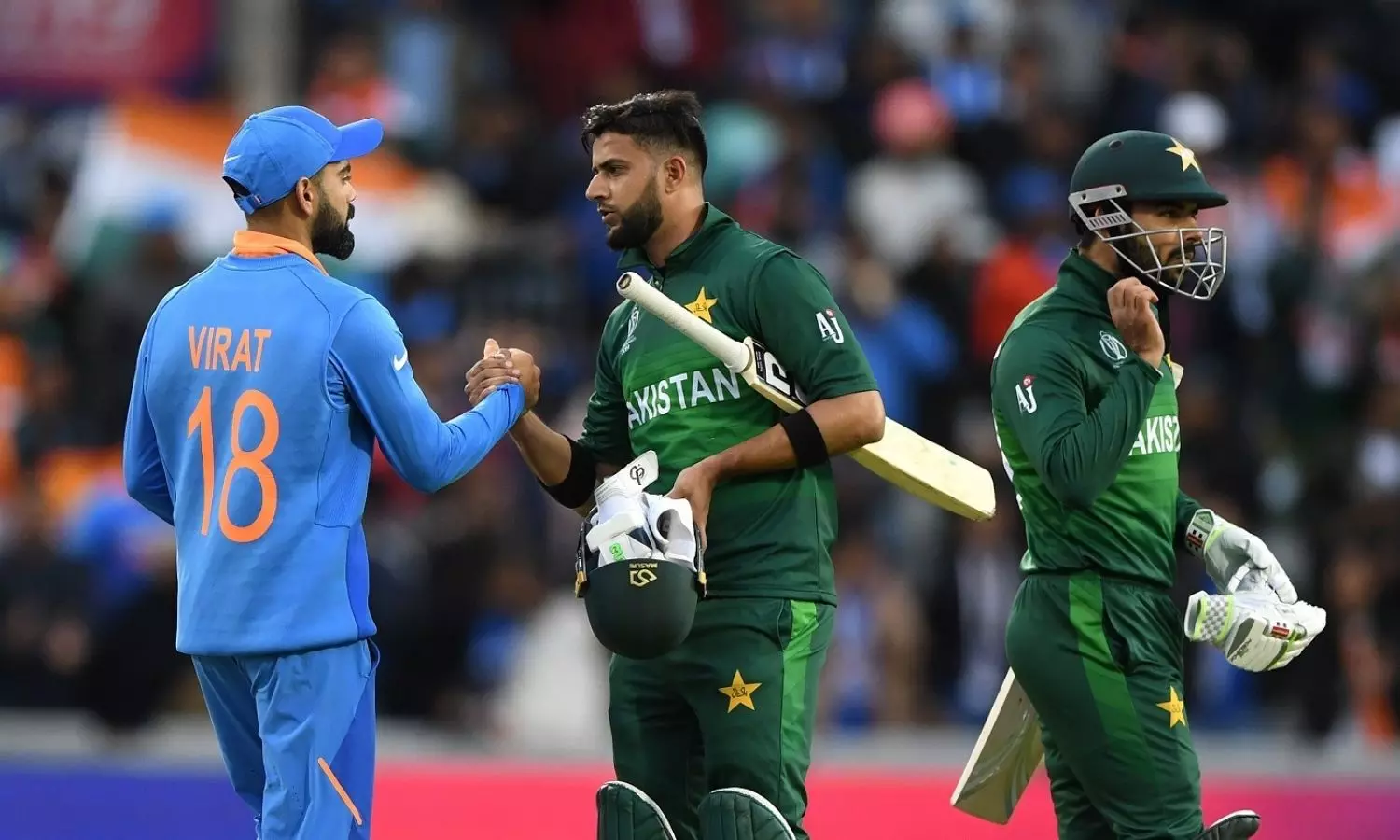Cricket
T20 World Cup: Why are India and Pakistan always drawn in the same group in ICC tournaments?
The last time India and Pakistan were in different groups of an ICC event was the 2011 World Cup.

Virat Kohli and Pakistan's Imad Wasim engage in a conversation after their 2019 World Cup match (Source: Espncricinfo)
India and Pakistan are bitter rivals politically. Ever since the partition of both the countries in 1947, the political tension between them keep flaring every now and then.
The rivalry though is not only political. It has always managed to transcend beyond that, especially into something like sports. Whenever there is an India-Pakistan clash, be it any sport, citizens of the respective countries want their nation to come out on top. And if by chance they fail to win, the athletes or players are subjected to some heavy criticisms.
With yet another India-Pakistan clash around the corner in the ICC Men's T20 World Cup in 2021, the sporting fraternity in both countries is abuzz with excitement and anticipation of another high voltage clash.
Cricket is no less than a religion in both India and Pakistan. There is a lot of pride attached to the game and with the countries not indulging in bilateral series since a long, their face-off in ICC tournaments becomes even more special.
India has lost only once to Pakistan in an ICC tournament – the all-important final of the 2017 ICC Champions Trophy in England.
Despite this lop-sided advantage that India enjoys over Pakistan in ICC tournaments, the two neighbours always end up being in the same group somehow. Why?
Yes, the last time India and Pakistan were placed in different groups in an ICC event was way back during the 2011 World Cup. However, the teams still faced off against each other in the semifinal.
| India and Pakistan's Groups in ICC Events Since 2011 WC | |
| Event | Group |
| 2012 ICC T20 World Cup | Group 2 |
| 2013 ICC Champions Trophy | Group B |
| 2014 ICC T20 World Cup | Group 2 |
| 2015 ICC World Cup | Group B |
| 2016 ICC T20 World Cup | Group 2 |
| 2017 Champions Trophy | Group B |
| 2019 ICC World Cup | Round-Robin Format (No Groups) |
| 2021 ICC T20 World Cup | Group 2 |
The very simple answer to this is viewership. Historically, all the India-Pakistan clashes in ICC tournaments have been thrilling with even the players high on adrenaline to beat their arch-rivals.
Who can ever forget that Javed Miandad's jump mimicking Kiran More at the 1992 World Cup, or a Ventakesh Prasad letting his emotions out after shattering the stumps of Aamer Sohail four years later in 1996?
Things like this make an India-Pakistan match a must-watch. As mentioned earlier, there is a lot of pride attached for both India and Pakistan playing each other. And with them not playing each other in bilateral series since 2012-13, the ICC events are the only place where fans can witness the high voltage encounter.
People from both sides of the border are usually glued to their television sets for the entire duration of the contest rooting for their teams, which naturally makes the clash a high revenue one for the International Cricket Council (ICC).
The 2019 World Cup, which was held in a round-robin format, saw close to 273 million people tuning in for the coverage on television with an additional 50 million viewers on digital platforms. This was way more than the viewership raked by the controversial England versus New Zealand final, making it the most-watched match of the tournament.
The 2017 Champions Trophy Final, which India lost, had an estimated viewership of 400 million, while 324 million people watched the group stage clash between the teams then. The India-Pakistan clash of the 2015 World Cup had a viewership of 313, while the 2011 World Cup semifinal had a viewership of 495 million – the most ever for an India versus Pakistan match.
Besides, never does an India-Pakistan cricket match happen with empty stands. The demand for tickets is such that no matter which ICC tournament, the price for attending an India-Pakistan match is always the highest. Fans throng the stadium in large numbers despite of this, which yet again helps in increasing the profit for ICC.
Thus, due to all these reasons India and Pakistan somehow end up in the same group during an ICC event.
